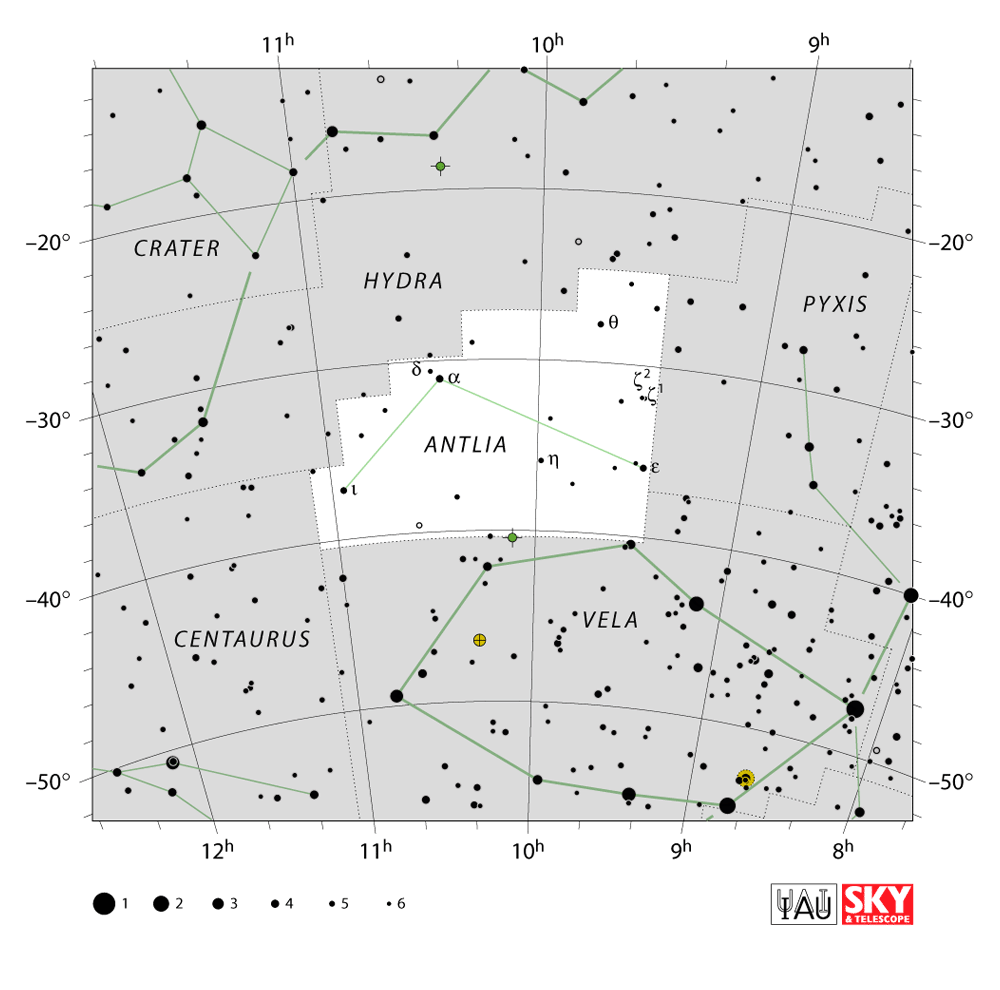The Constellations

The origin of the Constellations
For as long as people have been wandering the Earth they have been placing great significance in the celestial objects seen in the sky. Throughout human history and across many different cultures, names and mythical stories have been attributed to the star patterns in the night sky, thus giving birth to what we know as the constellations. When were the first constellations recorded? Archaeological studies have identified possible astronomical markings painted on the walls in the cave system at Lascaux in southern France.
Our ancestors may have recorded their view of the night sky on the walls of their cave some 17,300 years ago. It is thought that the Pleiades star cluster is represented alongside the nearby cluster of the Hyades. Was the first ever depiction of a star pattern made over seventeen millennia ago? (Rappenglück 1996) Over half of the 88 constellations that are recognized today are attributed to ancient Greek, which consolidated the earlier works by the ancient Babylonian, Egyptian and Assyrian.
Forty eight of the constellations we know were recorded in the seventh and eighth books of Claudius Ptolemy’s Almagest, although the exact origin of these constellations still remains uncertain. Ptolemy’s descriptions are probably strongly influenced by the work of Eudoxus of Knidos in around 350 BC. Between the 16th and 17th century AD, European astronomers and celestial cartographers added new constellations to the 48 previously described by Ptolemy; these new constellations were mainly “new discoveries” made by the Europeans who first explored the southern hemisphere. Those who made particular contributions to the “new” constellations include the Polish-born, German astronomer Johannes Hevelius; three Dutch cartographers, Frederick de Houtman, Pieter Dirksz Keyser and Gerard Mercator; the French astronomer Nicolas Louis de Lacaille; the Flemish mapmaker Petrus Plancius and the Italian navigator Amerigo Vespucci.

Constellation Figures
In star maps it is common to mark line “patterns” or other elaborate artwork to represent the shapes that give the name to the constellations. However, a constellation is defined by its boundary (indicated by sky coordinates) and not by its pattern and the same constellation may have several variants in its representation.
The constellations should be differentiated from asterisms. Asterisms are patterns or shapes of stars that are not related to the known constellations, but nonetheless are widely recognized by laypeople or in the amateur astronomy community. Examples of asterisms include the seven bright stars in Ursa Major known as “the Plough” in Europe or “the Big Dipper” in America, as well as “the Summer Triangle”, a large triangle, seen in the summer night sky in the northern hemisphere and composed of the bright stars Altair, Deneb and Vega.
While a grouping of stars may be officially designated a constellation this does not mean that the stars in that constellation are necessarily grouped together in space. Sometimes stars will be physically close to each other, like the Pleiades, but constellations are generally really a matter of perspective. They are simply our Earth-based interpretation of two dimensional star patterns on the sky made up of stars of many differing Brightness’s and distances from Earth.
Constellation Names
Each Latin constellation name has two forms: the nominative, for use when talking about the constellation itself, and the genitive, or possessive, which is used in star names. For instance, Hamal, the brightest star in the constellation Aries (nominative form), is also called Alpha Arietis (genitive form), meaning literally “the alpha of Aries”.
The Latin names of all the constellations, their abbreviated names and boundaries can be found in the table below. They are a mix of the ancient Greek patterns recorded by Ptolemy as well as some more “modern” patterns observed later by more modern astronomers.
Pronunciation of Constellation Names
Experienced astronomers, both professional and amateur, pronounce constellation names in many different ways, but have no trouble understanding each other. There is no single correct way of pronouncing a constellation name.
Charts And Tables
The charts below were produced in collaboration with Sky & Telescope magazine (Roger Sinnott & Rick Fienberg). Alan MacRobert’s constellation patterns, drawn in green in the charts, were influenced by those of H. A. Rey but in many cases were adjusted to preserve earlier traditions. The images are released under the Creative Commons Attribution 3.0 Unported license. See for instance:
The charts below were prouced in collaboration with Sky & Telescope magazine (Roger Sinnott & Rick Fienberg). Alan MacRobert’s constellation patterns, drawn in green in the charts, were influenced by those of H. A. Rey but in many cases were adjusted to preserve earlier traditions. The images are released under the Creative Commons Attribution 3.0 Unported license.
| Name / Pronunciation / Constellation Details | Abbreviation | English Name | Genitive / Pronunciation | Constellation Chart Download |
|---|---|---|---|---|
| Andromeda an-DRAH-mih-duh Click Here For Details | And | the Chained Maiden | Andromedae an-DRAH-mih-dee |  |
| Antlia ANT-lee-uh Click Here For Details | Ant | the Air Pump | Antliae ANT-lee-ee |  |
| Apus APE-us, APP-us Click Here For Details | Aps | the bird of paradise | Apodis APP-oh-diss |  |
| Aquarius uh-QUAIR-ee-us Click Here For Details | Aqr | the Water Bearer | Aquarii uh-QUAIR-ee-eye |  |
| Ara AIR-uh, AR-uh Click Here For Details | Ara | The Alter | Arietis uh-RYE-ih-tiss |  |
| Aries AIR-eez, AIR-ee-yeez Click Here For Details | ari | the Ram | Arietis uh-RYE-ih-tiss |  |
